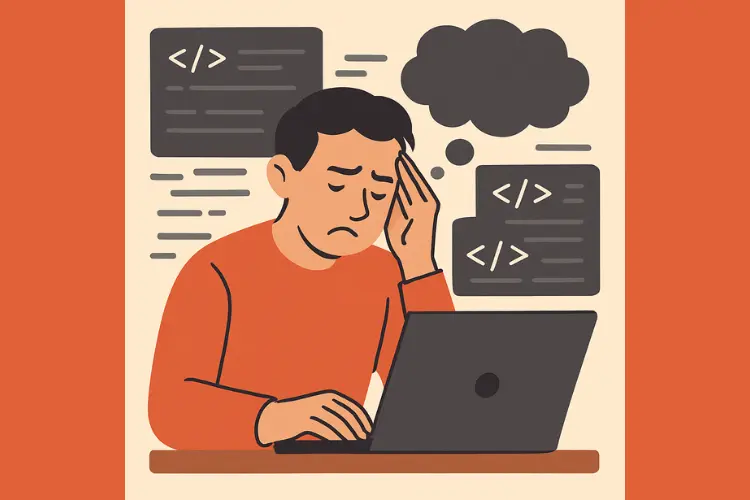1. Introduction: The Paradox of Productivity in Software Development
In software development, writing more code often feels like progress. Many developers judge productivity by the number of lines they write. The more code, the better the developer — or so the myth goes. But this mindset is misleading. Real productivity is not about volume. It’s about solving problems effectively and efficiently.
The best developers don’t chase complexity. They aim for clarity and simplicity. And sometimes, the best solution involves writing no code at all. This may sound counterintuitive in a world driven by deliverables and visible output, but seasoned developers know that code is a cost, not a free asset. Every new line introduces potential failure points.
2. Every Line of Code Is a Liability
Each line of code you write becomes part of your system’s future. It needs maintenance. It needs testing. It needs documentation. It can break. The cost doesn’t end when the code compiles or passes tests. It lives on.
More code means more risk. Bugs hide in complexity. Long functions, duplicated logic, and bloated classes create technical debt. The more you add, the harder your system becomes to understand and maintain.
Even minor changes become risky when the codebase is large and unrefined. If a new developer joins the team, they must navigate an ocean of unnecessary logic just to make a simple update. This slows progress, demoralizes teams, and inflates costs.
On the other hand, reducing code can increase stability. Deleting unnecessary parts or replacing them with simpler patterns saves time and effort in the long run. Code that doesn’t exist can’t fail. Removing complexity often reveals the true elegance of a solution.
Some of the best commits in a version control system are the ones with negative line counts — removing hundreds of lines by introducing a smarter abstraction or reusing existing logic. That’s true progress.
3. Simplicity Over Complexity: The Hallmark of Senior Developers
Junior developers often try to prove themselves by building complicated solutions. They equate difficulty with expertise. But experienced developers know better. They understand that code is for humans to read and only incidentally for machines to execute.
Senior developers seek the simplest path. They favor proven solutions and clear logic. They understand that maintainable software is more valuable than clever code. They know that cleverness without clarity leads to fragile systems and frustrated teams.
Complexity isn’t a badge of honor. It’s a red flag. Simplicity improves readability, reduces bugs, and shortens onboarding time for new team members. It enhances collaboration and helps scale development efforts across large teams.
Simplicity also means writing with intention. Rather than solving every edge case in a single method, seniors often decompose problems into small, well-defined parts. This makes testing easier and reduces side effects.
4. The Danger of “Vibe Coding”
“Vibe coding” is a term for writing code based on instinct or guesswork. Developers who vibe-code rely heavily on Stack Overflow, copying snippets without fully understanding them. They tweak lines until the errors disappear, hoping it works. If it compiles, they consider the problem solved.
This method may produce fast results. But those results are fragile. They lack consistency and depth. The code becomes difficult to extend or debug. And when issues arise in production, vibe coders struggle to explain how their patchwork solutions work.
Over time, vibe coding builds layers of technical debt. Systems become unmanageable. Teams spend more time patching than building. New features are delayed, and outages become frequent.
The worst part is that vibe coders often think they’re being productive. They point to the number of commits or hours spent at the keyboard. But activity is not the same as progress. Progress means building stable, scalable, and understandable systems.
5. Thinking in Systems, Not in Lines of Code
Good developers see the big picture. They don’t focus on individual functions or variables. They think in systems. They consider how users will interact with the product, how the backend connects to the frontend, how APIs scale under load, and how data moves through the application.
They understand how modules interact. They design data flows carefully. They consider how changes in one area affect the whole application. These developers think ahead. They anticipate growth. They prepare the system for changes that haven’t happened yet but likely will.
This systems thinking helps prevent future issues. It leads to better architecture and long-term success. Writing code is just one part of software development. Designing the right system matters more. Without this mindset, developers build short-term fixes instead of long-term solutions.
6. Real Development Happens Before the First Line of Code
The best developers don’t rush into writing code. They plan first. They model solutions. They sketch data structures. They explore edge cases. They ask questions like, “What could go wrong?” and “Is there a simpler way?”
Sometimes, days of thinking lead to hours of coding. That’s not laziness. That’s expertise. It’s the sign of someone who values quality over quantity. Someone who understands the cost of getting it wrong.
By spending more time on design, developers avoid rework. They catch flaws early. They ensure that the code they do write is effective and minimal. This upfront investment saves time and money later.
Planning also helps with team alignment. Everyone understands the goals. Everyone knows the constraints. This reduces confusion, eliminates redundant work, and leads to better results.
7. Red Flags in Pull Requests: Too Much Code, Not Enough Thought
Pull requests (PRs) reveal a lot about a developer’s thinking. Large additions without corresponding deletions often signal a problem. They suggest a lack of refactoring or reuse. It might indicate that the developer didn’t fully understand the problem.
Good PRs show thoughtful change. They simplify existing logic. They remove duplication. They explain why changes are needed. They are concise but complete. They show restraint.
When reviewing PRs, look for clear intent. Is the new code necessary? Is it simpler than what it replaces? Does it follow architectural patterns? Is there a clear benefit to the change?
If not, you may be looking at vibe code wrapped in false productivity. The review process should encourage refinement. Teams should celebrate developers who reduce lines and improve clarity, not those who bloat the codebase.

8. Conclusion: Code Less, Think More
Being a great developer isn’t about writing the most code. It’s about writing the right code. Simplicity, clarity, and maintainability are the true signs of skill.
Avoid the trap of vibe coding. Don’t chase complexity for its own sake. Spend time thinking. Design systems. Focus on the bigger picture. Challenge yourself to solve problems with less code, not more.
Your future self and your team will thank you. You’ll ship features faster, fix bugs with confidence, and create a codebase that grows instead of rots.
At StartupHakk, we believe that thoughtful development leads to better products and better careers. Code less. Think more. Build smarter.




